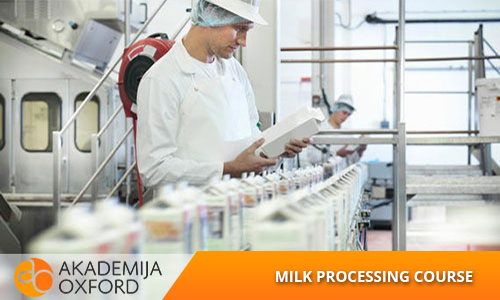Dairy Products Processing Training Manual
Milk processing Milk is a valuable nutritious food that has a short shelf-life and requires careful handling. Milk is highly perishable because it is an excellent medium for the growth of microorganisms – particularly bacterial pathogens – that can cause spoilage and diseases in consumers. Hyundai accent 2018 owners manual.
Milk processing allows the preservation of milk for days, weeks or months and helps to reduce food-borne illness. The usable life of milk can be extended for several days through techniques such as cooling (which is the factor most likely to influence the quality of raw milk) or fermentation. Pasteurization is a heat treatment process that extends the usable life of milk and reduces the numbers of possible pathogenic microorganisms to levels at which they do not represent a significant health hazard. Milk can be processed further to convert it into high-value, concentrated and easily transportable dairy products with long shelf-lives, such as butter, cheese and ghee. Processing of dairy products gives small-scale dairy producers higher cash incomes than selling raw milk and offers better opportunities to reach regional and urban markets.
Milk processing can also help to deal with seasonal fluctuations in milk supply. The transformation of raw milk into processed milk and products can benefit entire communities by generating off-farm jobs in milk collection, transportation, processing and marketing. Foreknowlegde. Certificate level with minimum of 3 years practical experience in the dairy sector; good knowledge of the English language, both written and oral.
Finally we expect your willingness to perform work during the programme. Study load. 40 hours. Recognition. certifcate. Target audience. owners and managerial staff of private, public or cooperative dairy farms, processing plants, staff of dairy training insitutes, extension workers.
Studymaterial. DTC E-platform available with all the trainingmaterials. Duration. 1 Week, 5 trainingdays. Date. Week 46, 12-16 November 2018.

Time. 9.00 -16.30 hours. Minimum number of participants. 8.
Maximum number of participants. 12.
Closing date. 22 October 2018. Location. North of Netherlands. Investment. 1,500 Euros coursefee incl.

Lunch, DTC can provide hotel (incl. Breakfast) and transport from hotel-trainingaccomodation for 90 Euros per day.

Children of a smallholder pig-farming household in Mon District, Nagaland, in the far northeastern corner of (tribal) India, which is participating in an ILRI project to help the rural poor enhance their production of pigs and pork (photo credit: ILRI/Ram Deka). A new set of training manuals for pig farmers is now available. The manuals inform poor rural pig farmers in developing countries how to ‘intensify’ their production, using lessons gathered from a research-for-development project in India.
Among other recommendations, the manuals offer ways of improving smallholder pig farming, including basic veterinary care, and pork production and marketing. ‘These manuals are the result of an analysis of the main gaps in small-scale pig production in India,’ said Rameswar Deka, a scientist from the International Livestock Research Institute (ILRI) based in Guwahati, in northeastern India. ‘They are a response to farmer needs and offer a reference for best practices in managing small-scale pig systems.’ The manuals are a result of a project called ‘Livelihood Improvement and Empowerment of Rural Poor through Sustainable Farming Systems in Northeast India’.
The five-year project, in India’s Assam and Nagaland states, was started in 2007 with funding from the Government of India, the International Fund for Agricultural Development (IFAD), ILRI and the World Bank. Raising pigs is a particularly important livelihood for smallholders in northeast India, where hilly terrain, poor roads and widespread poverty hamper crop cultivation. ‘Crop farming alone cannot meet the needs of families in these areas and many rely on livestock–mostly pigs and chickens–to supply much needed nutrition and income,’ said Deka. The livelihood improvement project is working with farmers to develop pig production in particular because the region has a history of pig rearing and because keeping pigs requires minimal investments at the outset. Pig production is also easily intensified using locally available resources.
Dairy Products Processing Training Manual
There are three well-illustrated manuals. Smallholders’ pig management offers a detailed look at pig systems in India, including features of common breeds, how to care and manage piglets, the reproductive cycle of pigs, breeding methods and how to cultivate feed-food crops. Veterinary first aid for pig offers information on organisms that cause common pig diseases, how to identify them and basic ways of controlling their spread. Hygienic pork production and marketing details how to hygienically process pork, follow slaughterhouse and meat inspection procedures and how to pack and preserve pork for sale. ILRI scientist Ram Deka (middle) distributes training manuals to Livestock Service Providers participating in an ILRI pig production project in the state of Nagaland, in northeast India, 2011 (photo credit: ILRI).
The manuals provide easy-to-apply principles in improving pig management, feeding, and care to enhance yields. Farmers in areas where the project is implemented say the manuals are helping them to increase their production. Project staff have set up systems for collecting feedback from farmers and trainers so as to improve future editions of the manuals. ‘We hope these manuals will serve other countries as well,’ said Iain Wright, ILRI’s former representative in Asia. ‘This information can be adapted to make relevant training tools for smallholder pig farmers in other areas of the world where small-scale pig production systems are growing rapidly.’ Download manuals: Training manual on smallholders’ pig management Training manual on veterinary first aid for pig Training manual on hygienic pork production and marketing Posted inTagged,.